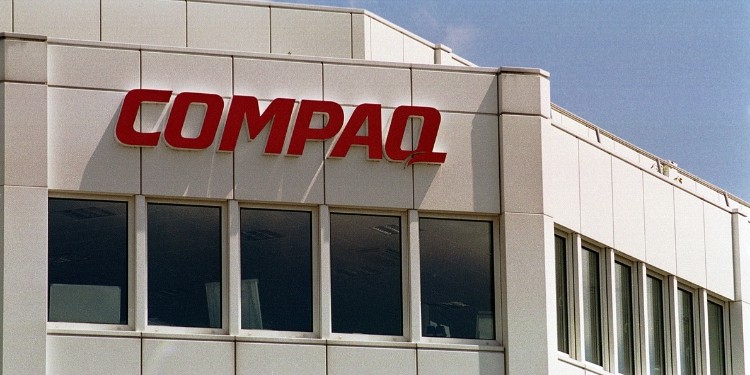Last Updated on
When you think about personal computer conglomerates the first names that spring to mind may be the likes of Lenovo, HP and Dell, but have you ever heard of Compaq? Well, if you were born after the year 2000, maybe not. Additionally, what you may not know is Compaq was part of the greatest David vs Goliath story in computing history, and won.
It’s likely that anyone who even suggested that Compaq would challenge the dominance of the personal computer giant, International Business Machines (IBM) back in 1982 would have been dismissed. However, the upstart back then, Compaq, did. At the time when Compaq started giving IBM a run for its money, it was 1% the size of IBM and from there on in, it grew exponentially, becoming the industry leader in such a short space of time.
History of Compaq
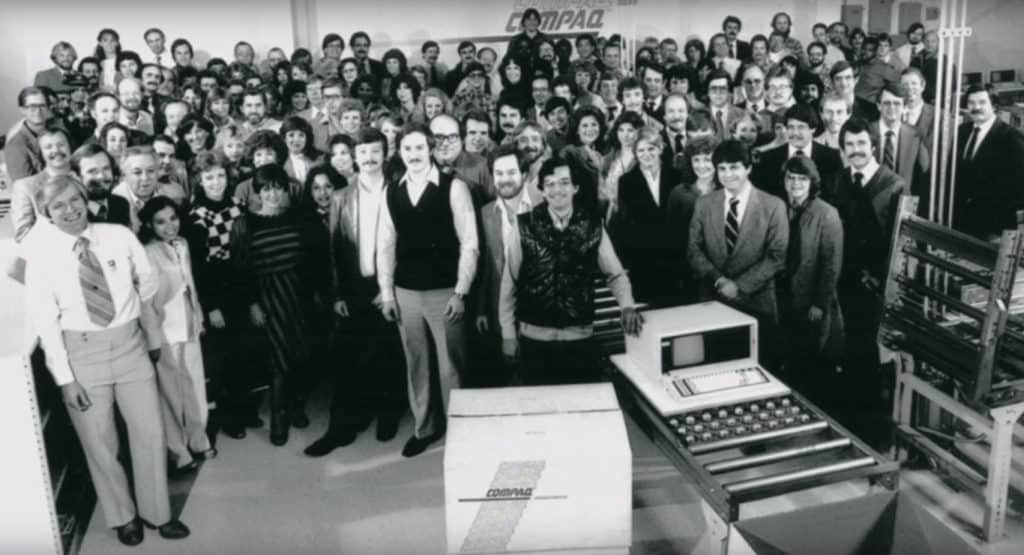
When Rod Canion, Jim Harris and Bill Murto founded Compaq in 1982 with just $3000 they set out with a clear vision of providing personal computers that were not only portable, but had the power to compete with IBM’s machines.
The Compaq Portable they created was revolutionary and very affordable, beating out Canadian rivals Hyperion in terms of sales and overall growth. The reason the Compaq Portable was so revolutionary was because they chose to make it 100% compatible with IBM’s systems, it was portable, as well as being as powerful as the top IBM machine out there. It came with 128k of RAM and 1-2 double-sided double-density 360 KB disk drives coupled with a Compaq proprietary bios: Compaq DOS 1.13.
This was a direction that other competitors chose not to undertake as they solely focused on price to drive sales, missing the mark on the hardware side, paving the way for Compaq to gain significant market share with their robust systems and compatibility.
Under Rod Canion’s strong directional thinking, Compaq quickly rose to become an industrial giant in the PC field, making history along the way: including becoming the youngest ever Fortune 500 company, only 4 years after its establishment. In 1987 they reached the $1 billion revenue mark, and by 1991, they were 5th place in terms of market share with around $3 billion in sales. Again, it was through Rod Canion and his leadership that made this happen. He created a company culture that attracted the industry’s top talent along with a somewhat flat hierarchical structure which was a strong motivational factor.
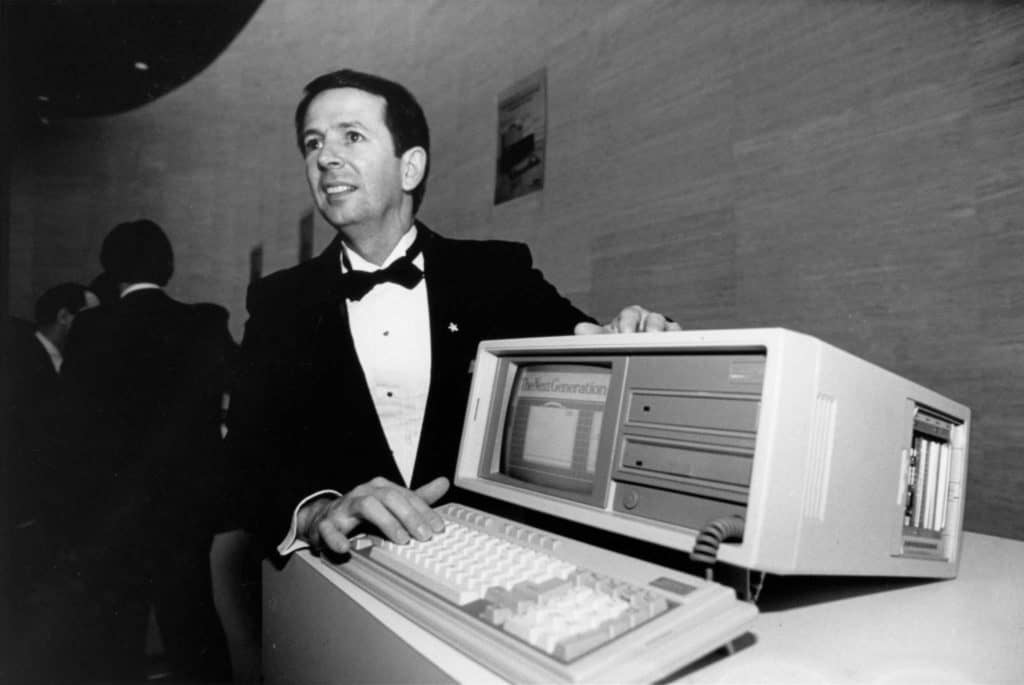
However, the early 1990s saw Canion ousted from the company he fought so hard to grow due to stark differences in business thinking with the other senior leadership. This dismissal moved Compaq into a new direction; looking at acquiring various companies to open up potential new revenue streams and markets. New CEO Eckhard Pfeiffer undertook a strategy of focusing on the retail market with offerings such as the Compaq Presario, a sub $1000 PC which was one of the most affordable options at that time. This, among other bold decisions from Pfeiffer propelled Compaq to new heights. At this point, Compaq, the once tiny personal computer manufacturer, overtook both Apple and IBM as the top PC manufacturer.
Despite the change in direction and early successes of Pfeiffer, all good things come to an end. Compaq slowly started to lose ground on their fierce rivals due to lack of clear vision amongst a variety of poor decisions.
Compaq’s downfall
These poor decisions mainly came in the form of acquisitions. The company acquired Tandem Computers, a mainframe computer maker, for $3 billion in 1997. It then acquired Digital Equipment Corporation (DEC) in 1998 for $9.6 billion.
The DEC acquisition proved to be particularly problematic. It was seemingly a good idea; however, the companies were not a good match. For example, DEC was in the business of manufacturing computer chips, but Compaq did not have plans to continue in that line of business. DEC’s chips weren’t compatible with Compaq computers and DEC made minicomputers, a type of smaller computer with less power than Compaq’s products. The company also made UNIX systems while Compaq was focused on Intel-based systems that ran Windows NT. Once the previously mentioned acquisitions became a formality, some people argue that this was the start of Compaq’s downfall. Company cultures clashed significantly and large quantities of layoffs created a hostile and demotivating working environment. This led to deadlines being missed and being unable to shift large quantities of inventory. Thus, a motion was created to remove Pfeiffer as CEO and install someone that was able to repair relationships with companies such as Microsoft to enable a bounce back.
Unfortunately, this was a little too late as Compaq continued to struggle against low-cost competition such as Dell and when the dot com bubble burst, their share price had plummeted to almost half. It was this dip in performance that sparked the conversations to merge with Hewlett-Packard (HP) to try and become the top dog once again.
Compaq and HP merger
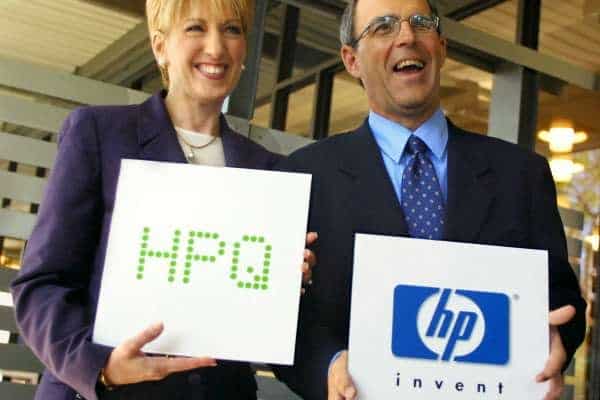
While some regard the latter portion of Pfeiffer’s reign to be the start of the downfall for Compaq, others argue it was the merger with HP that provided the nail in the coffin for the already struggling company.
The merger was criticised publicly by Wall Street analysts as well as senior decision makers within HP and only marginally passed when the internal votes occured. CNET News reported that HP had written a letter to its employees and the Securities and Exchange Commission in defense of the acquisition: “And, for the first time in a very long time, IBM will have a competitor that’s strong enough, bold enough, and talented enough to take them head-on in the enterprise space.” The company’s CEO at that time, Carly Fiorina, had complete faith that this merger would be a success and challenged those who doubted the acquisition to watch the space.
The friction that was caused in top level management during the merger along with around 15,000 in layoffs, contributed to the further downfall of Compaq. HP-Compaq started to lose more market share to Dell amongst various other competitors which, in turn, was the beginning of the end for Compaq.
Due to declining growth and being leapfrogged by Dell in terms of sales, HP looked to focus on bringing Compaq products into the ‘HP line’ and moved any Compaq options into a limited ‘budget’ segment. This continued throughout the early-mid 2000s and HP started to remove almost all original Compaq branding from its laptops. A new logo, HP software as a standard, and pushing their better performing HP Elitebooks and Probooks was the death for the Compaq brand. From 2013, Compaq almost ceased to exist.
Looking back on the much-doubted merger
While the acquisition had a more than shaky start, some analysts now argue that the HP-Compaq partnership ultimately helped HP as a whole. For instance, after the acquisition “HP started taking Dell’s approach and began selling more direct” said Tommy Wald, CEO of White Glove Technologies, a Texas-based technology and IT managed services consulting firm.
Even though the HP/Compaq merger sent jitters through the spines of many, it did not turn out to be the complete disaster many predicted. Although Compaq.com is no longer available in most parts of the world, the company’s initial success was unprecedented. Its smart strategy and strong products set the tone for today’s PC makers and allowed HP to learn and grow in a market that was becoming increasingly competitive.
Where are Compaq now?
Soon after HP acquired Compaq, a visit to Compaq.com started returning the message that the website was no longer available, making it clear that the days of Compaq.com were over.
As previously stated, any Compaq products were rebranded, taking on HP’s nameplate and HP’s new acquisition became the company’s face for its lower-end computers. However, for reasons not stated, HP discontinued the Compaq brand in 2013.
In 2015, the Newsan group announced that it had acquired the license to produce Compaq notebooks in Argentina. However, this did not result in the return of the Compaq.com site. It looks like the website was killed just like many other Compaq products had been previously.
TV and Film
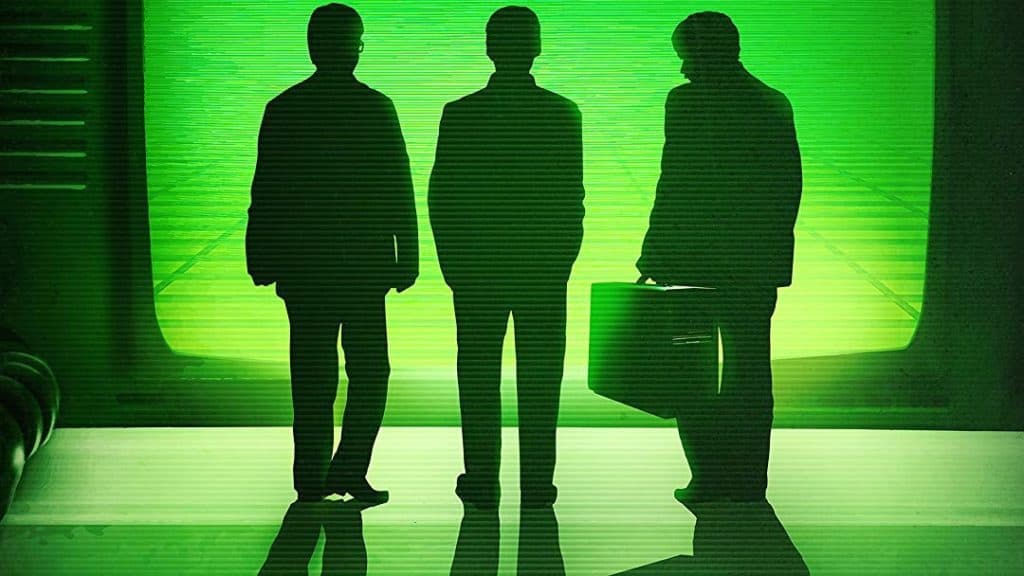
With Compaq as a company being such an industry mover and shaker, it since grabbed the attention of film and TV show makers alike, spawning a documentary; Silicon Cowboys and TV show; Halt and Catch Fire. Silicon Cowboys, starring Rod Canion himself, is a fantastic representation of how Compaq were able to create the all important products and how it affected the industry as a whole. Similarly, the TV series Halt and Catch Fire explores Compaq from the beginning, showcasing the talents of the company and how it managed to challenge the likes of IBM and the subsequent downfall in the 2000s era.

